Yamagata in Film
Earlier this year, a trove of vintage local news films was discovered in an underground Yamagata City Hall storage facility, and this historic footage has already been shown to audiences around Yamagata City. Some of these films were shot on Kodachrome color reversal film, and their colors remain bright and fresh. Films from the collection of 8mm devotee Kiyotaki Akira, on the other hand, capture the now-nonexistent Sanzan and Takahata railway lines from many angles, doing justice to the railway man that Mr. Kiyotaki was. In this program, we will be showing film footage that Mr. Kiyotaki converted to video using the telecine process. The images on the screen will bring back long-forgotten memories, and will give us a fresh sense of the time and place that they represent. We hope that you will enjoy your journey to the Yamagata of yesterday that resides within these films.
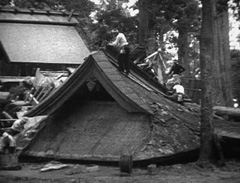 Yamagata City Newsreel No. 1
Yamagata City Newsreel No. 1
(Yamagatashi koho nyusu)- 1959 / Japanese / B&W / Video (Original: 16mm) / 9 min
Produced and provided by Yamagata City
Newsreel No. 1 introduces a ski carnival held in Zao in Yamagata Prefecture where we see Toni Sailer, a renowned ski racer who ignited a ski boom in the region, gracefully skiing on slopes. We see the destruction that the Isewan Typhoon brought to Yamagata, as well as the national high school sports meet held in the city and local activities of the Nichida district, including agricultural festivals such as the Scarecrow Festival.
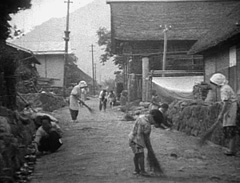 Yamagata City Newsreel No. 2
Yamagata City Newsreel No. 2
(Yamagatashi koho nyusu)- Production Year Unknown / Japanese / B&W / Video (Original: 16mm) / 11 min
Produced and provided by Yamagata City
Newsreel No. 2 includes glimpses of municipal elections and council meetings, greenhouse cucumbers, Japan’s Self-Defense Force participating in flood prevention training, as well as a mothers’ choir. The chapter titled “Eyes of Lens” highlights inhabitants of the Yamadera district as they attempt to control the mosquito population and disinfect their homes.
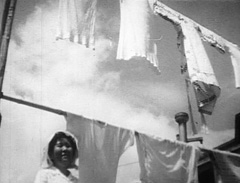 Yamagata City Newsreel No. 3
Yamagata City Newsreel No. 3
(Yamagatashi koho nyusu)- 1960 / Japanese / B&W / Video (Original: 16mm) / 11 min
Produced and provided by Yamagata City
Newsreel No. 3 includes a medical X-ray van called Komakusa battling the costly and protracted disease of tuberculosis, Emperor Hirohito attending a tree-planting festival in Zao, a mothers’ orchestra group rehearsing their music, as well as scenes of them chatting, preparing meals, and washing clothes.
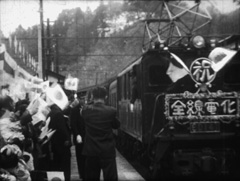 YIDFF 2013 Opening Film
YIDFF 2013 Opening Film
Yamagata City Newsreel No. 4
(Yamagatashi koho nyusu)- 1961 / Japanese / B&W / 16mm / 13 min
Produced and provided by Yamagata City
Newsreel No. 4 shows the completion of a railway construction project and the celebration of the first train running on the Senzan railway between Yamagata and Yamadera, grapes being harvested on the Akahage mountainside of Motosawa district, an invitation to a dance party by Zao’s skiing school to the head of Austria’s National Ski Academy, and a young man narrating how students at the Takinohira Branch School endure a severe winter.
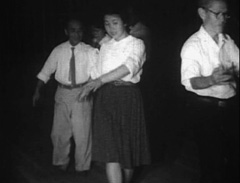 Yamagata City Newsreel No. 5
Yamagata City Newsreel No. 5
(Yamagatashi koho nyusu)- Production Year Unknown / Japanese / B&W / Video (Original: 16mm) / 11 min
Produced and provided by Yamagata City
Newsreel No. 5 illustrates Yamagata City’s efforts to collect trash and think of creative ways to reduce trash in parks and rivers, adults learning folk music and dance at a cultural center, a women’s association teaching a cooking class and planting vegetables in the mountains, and scenes of agricultural land being developed for a period of fifteen years after World War in order to meet food consumption demands.
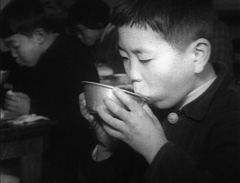 Yamagata City Newsreel No. 6
Yamagata City Newsreel No. 6
(Yamagatashi koho nyusu)- Production Year Unknown / Japanese / B&W / Video (Original: 16mm) / 14 min
Produced and provided by Yamagata City
Newsreel No. 6 features lunch meals rapidly introduced to schools in the mid-1950s to improve children’s health, young men undergoing arduous judo training in the winter with the hope of earning a black belt or competing in the Olympics, the improving conditions of rice paddy fields in the Emata, Chitose, and Dewa districts, flowers growing in Kanai district greenhouses, and the city’s focus on traffic safety.
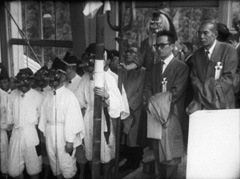 Yamagata City Newsreel No. 7
Yamagata City Newsreel No. 7
(Yamagatashi koho nyusu)- 1960 / Japanese / B&W / Video (Original: 16mm) / 11 min
Produced and provided by Yamagata City
Newsreel No. 7 introduces the Zao region’s tourism boom in 1962 with newly built roads connecting Yamagata and Miyagi prefectures, the surge of people driving on the new roads in November 1962, a newly constructed Zao Ropeway where, in the opening ceremony, monks in goblin masks take a cable car ride, and the sewer systems in Yamagata lagging behind sewers in Western countries, inspiring Yamagata’s 15-year sewage construction initiative which began in 1956.
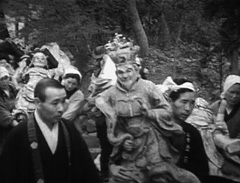 YIDFF 2013 Opening Film
YIDFF 2013 Opening Film
Restoration of the Konpon Chudo Temple
(Juyo bunkazai konpon chudo)- 1963 / Japanese / B&W / 16mm / 12 min
Produced and provided by Yamagata City
The Konpon Chudo Temple, designated an intangible cultural asset, opens this year, for the first time in 50 years, for a ceremonial exhibition. The restoration of this temple uncovers traces of fire and earlier renovations. The Buddhist statue was relocated to this temple, reflecting the open-minded attitude of locals with regards to the movement of sacred objects.
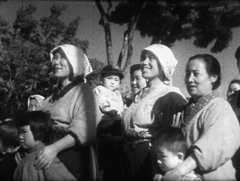 Prefectural News: New Cities, New Towns
Prefectural News: New Cities, New Towns
(Kensei nyusu: Atarashii machi atarashii mura)- Circa 1956 / Japanese / Video (Original: 16mm) / 18 min
Produced and provided by Yamagata Prefecture
In the mid-1950s, 223 towns and villages within Yamagata merged to form 49 municipalities. In one town named Asahi, located on Asahi Mountain along the Mogami River, eighty percent of the land consists of mountainous terrain. This film follows the changing lives of inhabitants from different generations, as they build a new town.
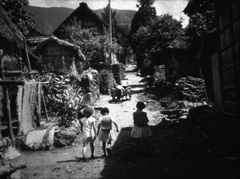 A Greater Yamagata
A Greater Yamagata
(Nobiyuku Yamagata)- Circa 1959 / Japanese / Color / Video (Original: 16mm) / Northern region: 26 min, Southern region: 16 min
Produced and provided by Yamagata City
From 1954 to 1956, villages surrounding Yamagata City were incorporated into the City. This film documents the expansion of Yamagata city and how it became wealthier both culturally and economically.
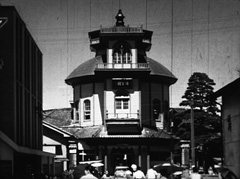 Our Institutions and Facilities
Our Institutions and Facilities
(Watashitachi no shisetsu)- Production Year Unknown / Japanese / Color / Video (Original: 16mm) / 28 min
Produced and provided by Yamagata City
This film introduces Yamagata City’s municipal housing, water system, waste facilities, animal slaughterhouses, hospitals, and orphanage. We see footage of the former glory of the Yamagata Saisei Hospital—now converted into a historic building. It is estimated that this film was produced in the early 1960s.
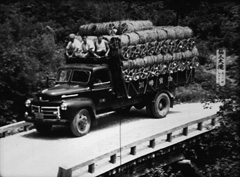 Sasaya Tunnel
Sasaya Tunnel
(Sasaya Tonneru)- Circa 1960 / Japanese / Color / Video (Original: 16mm) / 12 min
Produced by Sasaya Zuido Kaisaku Kisei Domeikai Association
The Sasaya Highway offers the shortest route from Yamagata to Sendai, but in the past it was a rugged mountain path. With the construction of the Sasaya Tunnel, trade routes from Shiogama’s Miyagi Prefecture (on the Pacific Ocean) to Sakata of Yamagata Prefecture (on the Sea of Japan) were connected. This scenic drive is also dotted with famous hot springs.
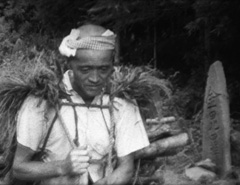 A New Mountain Route
A New Mountain Route
(Akeyuku Tougeji)- 1964 / Japanese / B&W / Video (Original: 16mm) / 14 min
From the 1950s, in order to make Yamagata less isolated from other regions of Japan, plans were made to create the Sasaya Tunnel by carving a hole through Sasaya Mountain. Through the eyes of inhabitants from Sekizawa, this filmstrip shows the importance of the completion of the tunnel for the facilitation of access to their community, which is situated on the mountain’s peaks.
